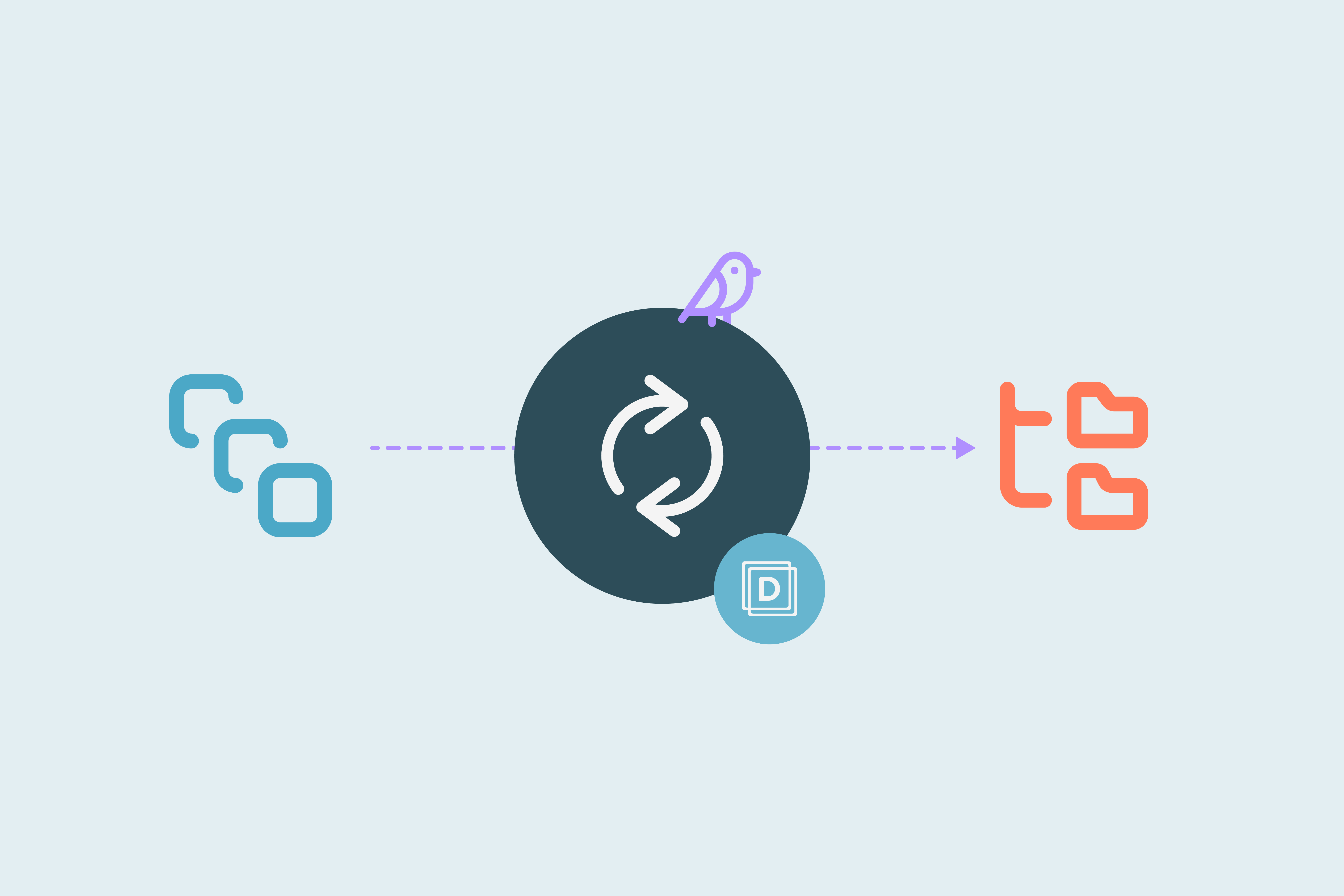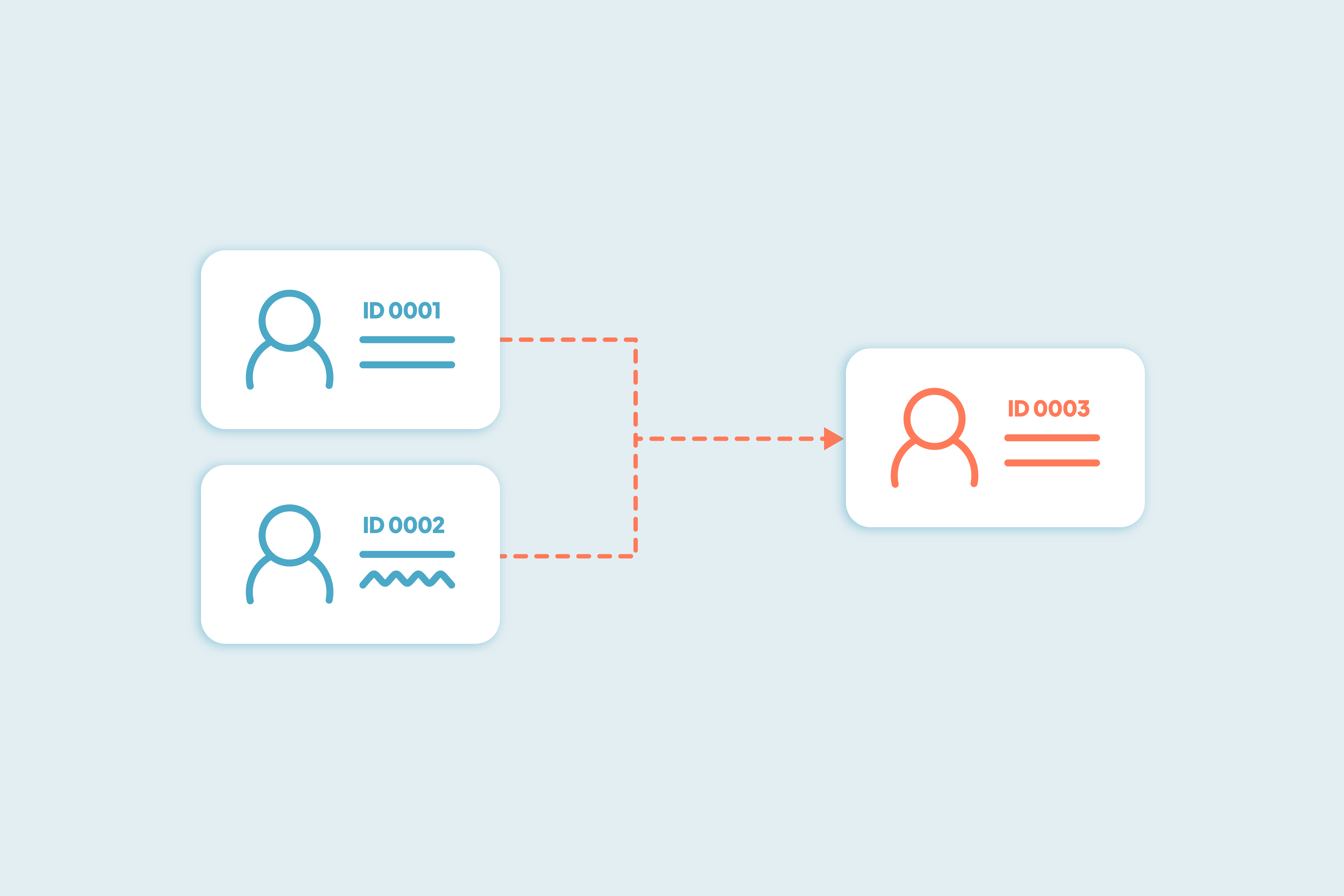How primary records work when merging in HubSpot with Dedupely
How Dedupely follows HubSpot’s logic to determine which record becomes primary.

When you merge records in HubSpot, one record always remains; that's your primary record. It survives the merge, creates a new ID, and absorbs all other records in the group.
But how that primary record is chosen, and whether you have any control over it, isn’t always clear.
In this guide, you’ll learn:
- What a primary record is (and what it isn’t)
- How HubSpot and Dedupely work together when merging
- Where you can influence the outcome, and where you can’t
- How to confidently predict which record will stay after merging
Let’s break it down.
What is a primary record?
When a merge happens, HubSpot will automatically create a new ID number and it will reference the oldest record for fields such as created date, activities dates, and read-only fields.
This record:
- Becomes the single, surviving version of all merged data
- Field values are chosen based on merge rules, which you can control (more on that below)
Think of the primary record as your anchor: It holds the final result.
How Dedupely (and HubSpot) chooses the primary record
When you merge duplicates in Dedupely, a new record ID is created due to HubSpot’s merge logic - most of the time, based on the oldest record. Keep in mind: if you've customized your CRM with integrations, workflows, or other settings, those changes may affect the outcome, in HubSpot and in Dedupely.
Here’s what happens in each merging scenario:
Bulk or auto merges: You can set merge rules for both. Review them first to confirm which values will win or lose. Merge rules let you define general or specific logic so Dedupely works how you need it to.
Dedupely isn’t replacing HubSpot’s merge engine, it’s working with it.
This means you can’t fully override which record will win or lose.
Manual merges: This gives you full control and overrides any default behavior HubSpot would normally apply. You can choose which values win or lose, from editable fields. We recommend this for a short number of matches.
What happens to the rest of the merged records
Once a match is merged in Dedupely, the non-primary records are absorbed into the new ID record that HubSpot created.
Here’s how Dedupely handles merged records (powered by HubSpot):
- Associations and activities stay intact: All tasks, notes, emails, tickets, attachments, associated companies, and deals from merged records are preserved and transferred into the primary
- Your merge rules control field values: Dedupely applies the merge rules you’ve set, field by field. If no rule is set for a field, Dedupely defers to HubSpot’s behavior (usually: keep the primary field’s value)
- Blank fields typically never win over filled fields: Dedupely always protects filled values, a blank field from a secondary record will never overwrite an existing one
You’re not losing data, you’re consolidating it, and Dedupely gives you more control over how that happens.
Note: If you have any workflows or triggers that run after a merge, those can affect the final result of the merged record.
How to influence which values win
You might not be able to set the primary record, but Dedupely gives you tools to influence which values win.
Here’s how:
- Refine your match options: Choose values that are more likely to isolate your preferred record. For example, matching on Company Name will group more obvious duplicates, along with First Name, Last Name, and Phone Number.
- Switch to manual merge when needed: For high-stakes merges or strategic records (like your top customers), do them manually to lock in your preferred outcome. Use the custom merge to choose individually which values per field will be kept.
You can choose which values are going to be kept for bulk merging by using merge rules.
What you now know, and what to do next
You now know:
- How Dedupely follows HubSpot's core merge functionality to determine how the data is kept
- How Dedupely gives you extra visibility and merge control
- When and how you can step in to influence which values win or lose
Next steps:
- Use Search Pads + filters to match duplicates intentionally
- Define Merge Rules to influence which value wins after a merge
Our Customer Success team can walk you through the exact setup based on your needs.
Contact us
We’d be happy to help you get this set up.
Write us a message
We probably know the answer to your question already 🙂
Book a Zoom
Whether you’re getting started or getting intense.
Get in touch!
Discover Related Blog Posts
Stay updated with our latest articles and insights.






















